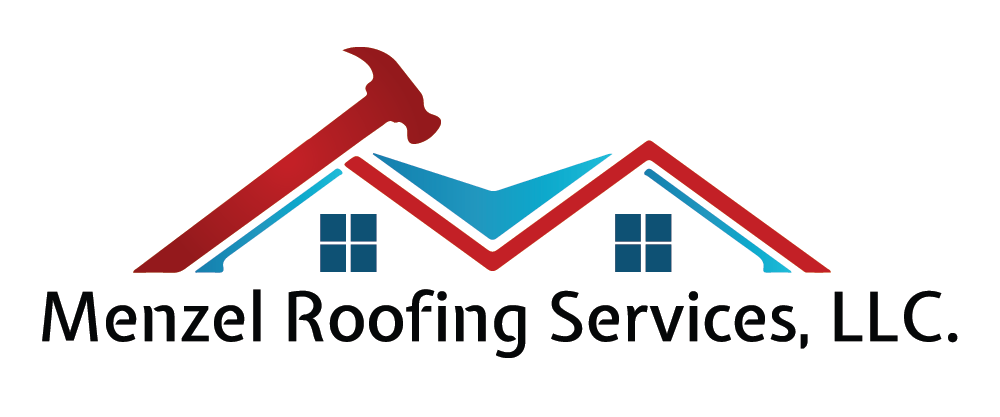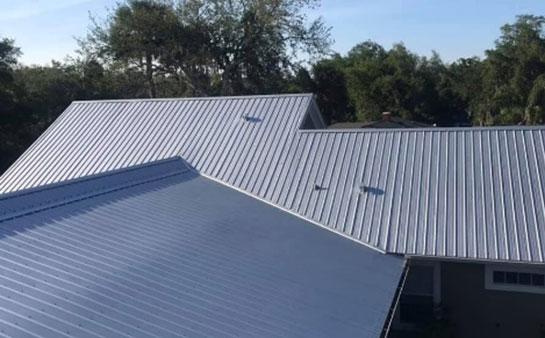Thanks for reading this article and we know that metal roofs are not the most interesting subjects to talk about. But they are really important for the overall health of your property. Having a roof that will last a very long time maybe even outlive you – you need to understand why metal roofs matter so much. Hopefully, this blog article will help you out. Again thanks for reading it.
 What is a metal roof's life expectancy? This blog article was written by Menzel Roofing Services LLC
What is a metal roof's life expectancy? This blog article was written by Menzel Roofing Services LLC
When it comes to a metal roof, many homeowners/business owners don’t understand the importance of knowing the life expectancy of a metal roof. But what is a metal roof and why is its life expectancy so important to your home? Here, we’ll tell you everything you need to know about soffits. Let’s get started.
What is a metal roof’s life expectancy?
So, if you’re thinking of installing any kind of roof system, your primary consideration might be when you’ll have to replace the roof and do it all over again. So you want to know the average lifespan of the roof you choose and how the maintenance costs will add up over time. If you’re thinking about a metal roof for your home or business, you might be attracted to it for its impressive life expectancy — or maybe the metal is just attracting your magnetic personality.
Either way, you need to know all the facts before deciding about investing in a metal roof.
In this blog post, we’ll go over how long a metal roof lasts, the advantages of metal roofing, whether metal roofs last longer than roofs constructed of alternate materials, and other need-to-know details before making any final decisions.
How long does a metal roof last?
Metal roofs are known for their longevity, with the average life of a metal roof estimated to be 40 to 70 years depending on the metal material they’re made from, according to State Farm Insurance figures. Slate, tile, and copper roofs can last five decades, according to some estimates. For comparison, traditional asphalt roofing materials have a life expectancy of 12 to 20 years before needing replacement, the insurer says.
Do metal roofs last longer than other roofing materials? Yes, the metal roof lifespan is one of the longest, but it has a couple of competitors for longevity. Concrete and clay tiles can last a century, according to the National Association of Home Builders and the International Association of Certified Home Inspectors. Slate roofing can last 60 to 150 years, according to the same sources. But with metal’s lifespan lasting from 40 years at minimum to 60 or 80 years at maximum, it’s one of the longest-lasting roofing materials you can find. Asphalt and asphalt shingles, built-up roofing, cellulose fiber, coal and tar, fiber cement, modified bitumen (aka asphalt), TPO, and wood last 30 years or less, according to estimates.
A corrugated iron metal roof’s life expectancy is 60 years. That being said, metal roofing is typically less expensive in the long term because one metal roof (one lasts 60+ years) can easily outlast at least three asphalt shingle roofs (one lasts 15-20 years).
The average lifespan of a roof varies by roofing material, but it’s also important to keep in mind that many materials — such as asphalt shingles — have shorter life expectancies in more extreme climates. Here in Florida, the wind, rain, and exposure that commercial and residential roofs contend with mean that sometimes is often shaved off average roof lifespans.

Metal Roof Work Done By Menzel Roofing
What are the advantages of metal roofing?
The benefits of metal roofing include durability, safety, and environmental friendliness in addition to longevity.
First, let’s talk about durability. Metal roofs can sustain high winds (important during tropical storms and hurricane weather) of up to 140 mph. They resist cracking and corrosion, impacts, and penetration. All this means they require less maintenance overall, though it’s always good to send out an inspector periodically to verify there’s no need for repairs.
Another advantage is safety, particularly in the form of fire resistance. Metal roofs won’t spark and burst into flames if struck by lightning or if the building’s exposed to wildfires. Did you know, that when your internet service is provided by a cable service or satellite dish, a metal roof will not have any impact on your Wi-Fi signal within your home? It’s true!
Metal roofs also bring environmental benefits in terms of energy efficiency and recycling capabilities. Metal roofs can reflect UV and infrared light rays from the sun that contribute to surface radiant heat on the roof. The light bouncing off can drop the building owner’s cooling costs from 10% to 25%, State Farm estimates. On top of that, metal roofs are completely recyclable and contain up to 95% recycled content. Other options like shingles create literal tons of waste each year.
Lastly, metal roofs are often touted as a good way to boost home value. The Remodeling Report for 2019 found that a metal roof, on average, cost homeowners $38,600 and increased home value by 60.9 percent.
What are the disadvantages of metal roofing?
With benefits, there are also some drawbacks. Metal roofs can be more expensive to install than roofs made of other roofing materials. They can also prove loud and noisy when anything falls on them, such as hail during a thunderstorm. Though adding insulation can abate this problem, that adds cost to the project.
Another potential problem is difficulty in matching colors and styles when repairs are required. If you extend your home years after the original build, it might be tricky to exactly match your existing metal.
Finally, there’s the matter of performance. If the metal roof isn’t installed well by knowledgeable professionals (such as Menzel Roofing), water could accumulate on the roof and eventually create serious damage. Some metals rust in certain climates or dent during hailstorms. This is quite common unfortunately here in Florida.
Want more information on metal roofs to last you a lifetime?
Metal roofing systems, also known as standing seam roofs, are growing in popularity because of their availability in various colors and profiles and because of the aforementioned benefits that attract building owners, both commercial and residential. Though the upfront investment may be greater than with tile roofs, the low maintenance requirements may result in lower lifetime costs than the alternatives to metal.
Thanks for reading this Menzel Roofing Blog Article!
Again – Thanks for reading this blog article by Menzel Roofing Services. We wanted to answer the question about “What is a metal roof’s life expectancy?” – we hope you enjoyed reading this and find the information useful. So keep up with us on Facebook or learn more about our company now by checking our home page. Want to ask questions or get a quote? Contact us today for immediate assistance and answers on financing options. Thanks for reading this blog article.